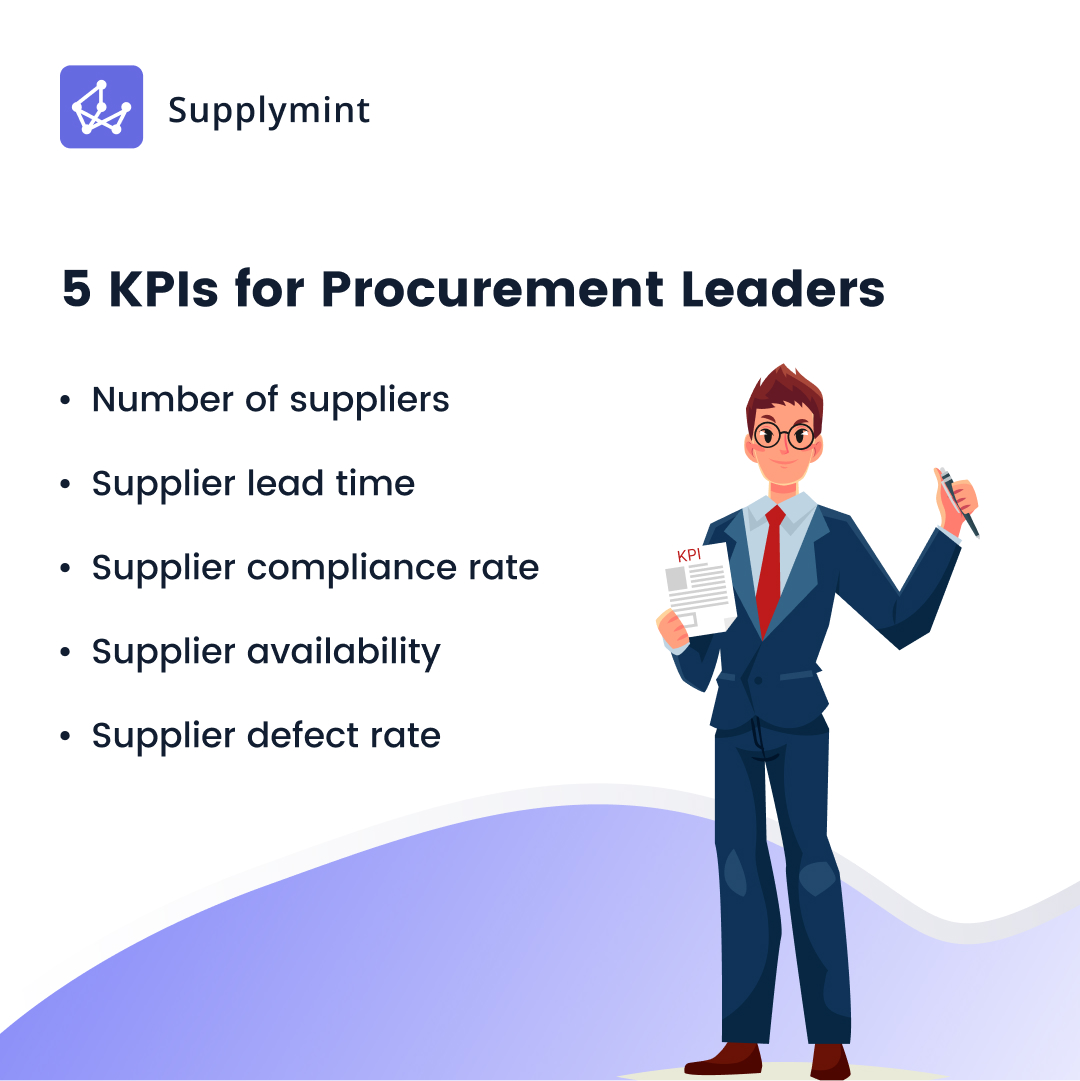Cost savings is one of the unsaid procurement KPIs that every procurement manager has to achieve but now the companies are looking beyond cost saving. As a result, procurement leaders are constantly looking for ways to improve their procurement methods and make them more sustainable. The procurement managers also don’t want to make decisions without any correct data through relevant KPIs.
Procurement KPIs means different things to different leaders in business to the point where most leaders don’t know the correct KPI to measure performance.
Here are some KPIs that procurement leaders should look out for:
Number of suppliers: The procurement teams of the company have many suppliers for a particular item. Instead of managers depending on one single supplier, they should have multiple vendor options for goods and services. The KPI of the number of suppliers keeps a track of the number of people the company deals with so that they can diversify their suppliers and mitigate risk. Having too many suppliers is also not profitable as the discount and supplier relations get reduced. While creating the number of supplier lists, both the matrix has to be considered. The supplier number must be justifiable.
Supplier lead time: A lead time is the total time needed to fulfill an order. This metric measures the time between PO sent to vendors to final delivery of goods. Buyers must set targets for the expected lead time and monitor whether suppliers stick to those times. Repeated failure to meet the targeted lead time requires corrective action. Small lead times are ideal, provided there is no compromise on quality.
Supplier compliance rate: Compliance rate KPI helps asses’ supplier’s compliance with business requirements. The entire procurement function is built on the basic agreement between the supplier and the company. This agreement covers terms like delivery time, exclusive discount offers, maximum reaction time in case of delays or issues, payment mode, etc. A drop in the compliance rate KPI results in an increase in indirect procurement spending. The compliance rate KPI provides insights into supplier relationships and helps save costs through negotiations with suppliers. It is an important KPI measure to consider.
Supplier availability: This procurement KPI measures the supplier’s response to urgent requirements. This KPI helps businesses determine the reliability that can be placed on the vendor. Supplier availability is measured by the ratio between the numbers of times items were available on the vendor’s side to the total number of orders placed with the vendor. Businesses can take decisions on the reliability of a supplier by continuously monitoring the supplier availability metric. Ideally, supplier availability of 90% and above is a sign of greater efficiency and functioning of the supply chain.
Supplier defect rate: The supplier defect rate KPI is useful in evaluating the individual quality of the supplier. The final quality of the product can be closely evaluated by the purchasing department using this KPI. This metric is measured as a ratio of the number of substandard products to the total number of units inspected. The measure of supplier defect rate is usually in terms of defects per million. The procurement department can measure the supplier defect rate and break it down based on the defect type to gain actionable insights into vendor performance. Continuous tracking of the supplier defect rate and breaking it down into defect types provides key insights into supplier performance and reliability.
